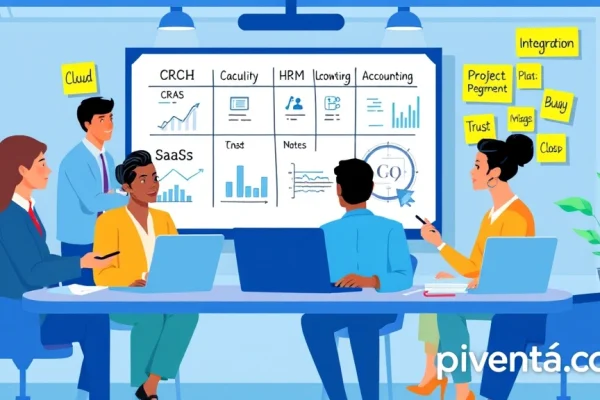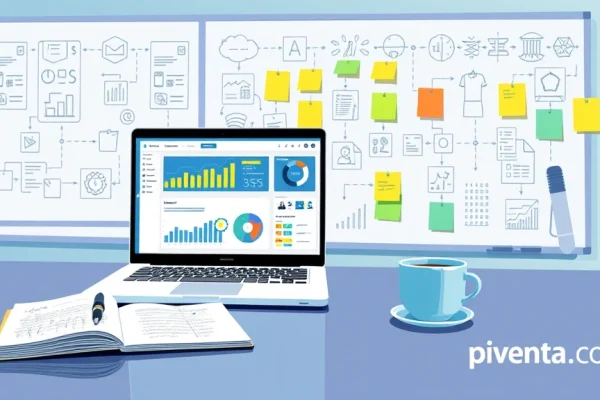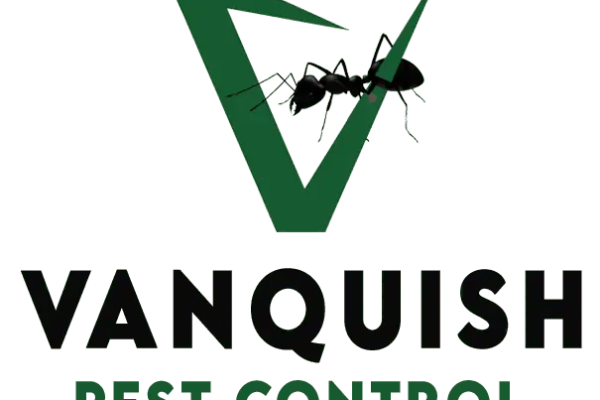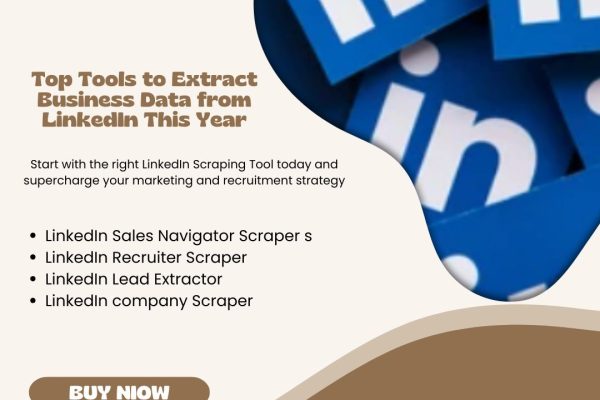Ever thought about diving into the world of Software as a Service (SaaS)? It’s like owning a digital goldmine, right? Everyone from bustling startups in Silicon Valley to established enterprises in New York City is either using it or building it. But hey, before you jump in with both feet, let's chat about what really makes a SaaS business tick in the good ol' USA. It’s more than just coding; it’s about understanding the heartbeat of your customers and the rhythm of the market. You're not just selling software; you're selling solutions, convenience, and a future where things just work.
What Exactly is SaaS, Anyway?
You might be thinking, "SaaS? Is that like when I pay for Netflix or Spotify?" Bingo! You're on the right track. SaaS means you're subscribing to software that lives in the cloud, accessible through the internet. No more hefty upfront costs, no more agonizing installations, and definitely no more worrying about updates. It's all handled for you, usually for a monthly or annual fee. Think of it as renting a super-powered tool instead of buying a whole factory. This model has truly revolutionized how businesses operate, from tiny mom-and-pop shops in Kansas to sprawling tech campuses in Texas.
Why is SaaS Such a Big Deal in the US?
The U.S. market has a huge appetite for innovation and efficiency. We love things that make our lives easier and our businesses run smoother. SaaS fits right into that narrative.
- Accessibility: You can access your tools from anywhere – your home office in Florida, a coffee shop in Seattle, or a co-working space in Austin. All you need is an internet connection.
- Cost-Effectiveness: For businesses, especially startups, it's a game-changer. Instead of shelling out thousands for licenses, you can pay a manageable monthly fee. This frees up capital for other crucial investments.
- Scalability: Need more users? No problem. Need fewer? Easy peasy. SaaS solutions are built to scale up or down with your business needs, making them incredibly flexible.
- Automatic Updates: Remember the days of waiting for the IT guy to update your software? With SaaS, updates happen seamlessly in the background. You always have the latest and greatest version without lifting a finger.
The Absolute Must-Haves for a Thriving SaaS Business
Alright, so you're convinced SaaS is the way to go. But what are the nuts and bolts, the essential ingredients, the secret sauce, if you will, to build a successful SaaS venture here in the states? Let’s break it down.
1. A Killer Product That Solves a Real Problem
This might sound obvious, but you'd be surprised. Many businesses fail because they build something cool, but nobody actually needs it. Your product isn't just software; it's a solution to a pain point your target audience experiences daily.
Hitting the Mark with Your Solution
- Identify the Pain: What frustrates people? What takes up too much time? What costs too much money? Dig deep to find a genuine problem. For instance, maybe small businesses in rural America struggle with complex payroll systems. There’s your cue!
- Validate Your Idea: Don't just assume. Talk to potential customers. Run surveys. Build a Minimum Viable Product (MVP) and get feedback. This isn't just about building; it's about listening.
- Offer Unique Value: What makes your solution different? Why should someone choose you over the competition? Maybe it's an incredibly intuitive interface, a unique feature, or unparalleled customer support.
2. A Solid Business Model and Pricing Strategy
You can have the best product in the world, but if your business model is shaky, you're building on quicksand. This is where you figure out how you're going to make money and sustain your operations.
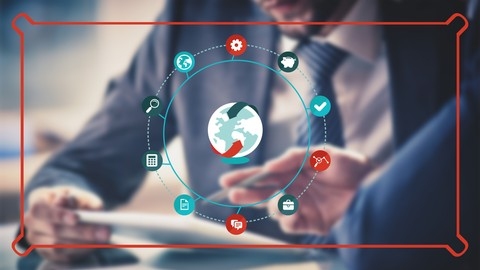
Crafting Your Financial Blueprint
- Subscription Tiers: Most SaaS companies offer different pricing tiers (e.g., Basic, Pro, Enterprise). This allows you to cater to various customer segments and their varying needs and budgets.
- Value-Based Pricing: Instead of just guessing, price your product based on the value it provides. If your software saves a company $10,000 a month, charging them $500 is a no-brainer for them!
- Freemium vs. Free Trial:
- Freemium: Offer a basic version of your product for free forever, with premium features costing money (think Spotify's free tier). This is great for broad adoption.
- Free Trial: Give users full access to your product for a limited time (e.g., 7 or 14 days). This encourages users to experience the full value before committing.
- Transparent Pricing: Americans appreciate clarity. Make your pricing straightforward and easy to understand. No hidden fees, no confusing jargon.
3. Customer Acquisition and Retention Strategies
Getting customers is one thing; keeping them is another. In SaaS, churn (customers leaving) is your enemy. A good acquisition strategy gets them in the door, and a stellar retention strategy keeps them there.
Building Your Customer Base
- Content Marketing: Create valuable blog posts, videos, and guides that address your audience's pain points. If you build it (great content), they will come.
- SEO (Search Engine Optimization): Make sure your website shows up when people search for solutions that your product offers. Think about what your ideal customer in, say, California, might type into Google.
- Paid Advertising: Google Ads, social media ads – these can get you in front of your target audience quickly.
- Referral Programs: Happy customers are your best marketers. Reward them for spreading the word!
- Exceptional Customer Support: This is non-negotiable. Quick, helpful, and friendly support can turn a frustrated customer into a loyal advocate. Think Zappos-level service.
- Onboarding: Make it super easy for new users to get started and see the value of your product quickly. A smooth onboarding process is crucial for retention.
- Regular Updates & New Features: Keep your product fresh and exciting. Show your customers that you're continually investing in making their lives better.

4. Robust Technology and Infrastructure
Behind every great SaaS product is a rock-solid technological foundation. You need to ensure your software is reliable, secure, and performant.
The Tech Backbone
- Scalable Architecture: Your system needs to handle growth without breaking a sweat. If you suddenly get 10,000 new users, your system shouldn't crash.
- Security: This is paramount. You're dealing with customer data, possibly sensitive information. Invest heavily in security measures to protect against breaches. Compliance with regulations like GDPR (even if you're US-focused, some clients might be international) or industry-specific standards is key.
- Reliability (Uptime): Your software needs to be available 24/7. Downtime means lost productivity for your customers and lost trust for you. Aim for "five nines" (99.999%) uptime.
- User Experience (UX) and User Interface (UI): Even the most powerful software will fail if it's difficult or unpleasant to use. Invest in intuitive design that makes your users say, "Wow, this is easy!"
5. Data-Driven Decision Making
In the world of SaaS, data is your superpower. Every click, every subscription, every cancellation tells a story. You need to listen to these stories to make informed decisions.

Leveraging Your Data
- Key Performance Indicators (KPIs): Track metrics like Customer Acquisition Cost (CAC), Lifetime Value (LTV), Churn Rate, Monthly Recurring Revenue (MRR), and Average Revenue Per User (ARPU). These tell you how healthy your business is.
- Customer Feedback: Use surveys, in-app feedback, and customer support interactions to understand what your users love and what they wish was better.
- A/B Testing: Don't guess which marketing message works best or which feature layout is more intuitive. Test different versions and let the data tell you.
6. A Strong Team and Culture
Building a SaaS business isn't a solo act. You need a passionate, skilled team that believes in your vision.
Building Your Dream Team
- Diverse Skill Sets: You'll need developers, designers, marketers, sales professionals, and customer support reps.
- Culture of Innovation: Encourage experimentation, learning from failures, and a continuous desire to improve.
- Customer-Centric Mindset: Everyone, from the CEO to the newest intern, should be focused on delivering value to the customer.
- Remote-Friendly: Many successful SaaS companies in the US embrace remote work. This allows you to tap into a wider talent pool, regardless of geographical location.

Tables for Thought
Here’s a quick comparison to illustrate some key SaaS metrics you should always keep an eye on:
| Metric | What it Measures | Why it's Important |
|---|---|---|
| MRR (Monthly Recurring Revenue) | Predictable revenue generated each month. | Shows the financial health and growth of your subscription business. |
| Churn Rate | Percentage of customers who cancel their subscription. | High churn indicates problems with product, pricing, or customer satisfaction. |
| LTV (Lifetime Value) | Total revenue expected from a customer over their lifetime. | Helps determine how much you can spend on customer acquisition. |
| CAC (Customer Acquisition Cost) | Cost to acquire a new customer. | Compares against LTV to ensure profitability (LTV should be significantly higher than CAC). |
| ARPU (Average Revenue Per User) | Average revenue generated per user. | Helps you understand the value each customer brings and identify upselling opportunities. |
And a quick look at common SaaS pricing models:
| Pricing Model | Description | Pros | Cons |
|---|---|---|---|
| Freemium | Basic features are free; advanced features require payment. | High user adoption, strong lead generation. | Many free users may never convert; can be expensive to support free users. |
| Per-User | Price scales with the number of users. | Simple to understand, predictable revenue. | Can discourage adoption for larger teams; limits growth if users are hesitant to add more seats. |
| Tiered Pricing | Different packages with varying features and prices. | Caters to different customer segments, encourages upgrades. | Can be complex for customers to choose; risk of feature bloat in higher tiers. |
| Usage-Based | Price based on consumption (e.g., data storage, API calls). | Fair for users, scales with value provided. | Unpredictable revenue; users may limit usage to control costs. |
| Value-Based | Price set according to the perceived value the product provides to the customer. | Maximizes revenue; aligns with customer success. | Difficult to quantify value; requires deep understanding of customer needs. |
Frequently Asked Questions About SaaS Businesses

Q1: Is the SaaS market still growing in the US, or is it saturated?
A: Absolutely, the SaaS market in the US is still booming! While there are many players, the demand for specialized, efficient, and innovative software solutions continues to grow across all industries. Think about it: new problems emerge, and existing ones evolve, creating constant opportunities for new SaaS products. Plus, many traditional businesses are still migrating to cloud-based solutions. There's plenty of room for creative, problem-solving entrepreneurs like you.
Q2: How long does it typically take to build a successful SaaS business?
A: Building a successful SaaS business is definitely not an overnight sensation. It's more of a marathon than a sprint. From ideation to profitability, it can take anywhere from 3 to 7 years, sometimes even longer. The first year or two are usually focused on product development, finding product-market fit, and acquiring initial customers. Then comes the scaling phase. Patience, persistence, and a willingness to iterate are your best friends here.
Q3: What's the biggest challenge for new SaaS startups in the US?
A: One of the biggest challenges is standing out in a crowded market and acquiring customers efficiently. You might have a fantastic product, but if nobody knows about it, or if your customer acquisition cost (CAC) is too high, you'll struggle. Another significant hurdle is achieving "product-market fit" – making sure your product truly resonates with a large enough audience that's willing to pay for it. It's about finding that sweet spot where your solution perfectly matches a widespread need.
Q4: How important is customer feedback in SaaS?
A: Customer feedback isn't just important; it's the lifeblood of a successful SaaS business. Your users are your compass. They tell you what's working, what's not, and what new features they desperately need. Regularly collecting and acting on feedback helps you iterate your product, improve user experience, reduce churn, and ultimately build a solution that your customers love and stick with. Think of it as continuous improvement, driven by the people who matter most.
Q5: Should I focus on a niche market or try to serve a broad audience?
A: For most new SaaS businesses, especially in the US, focusing on a specific niche market is often a smarter strategy initially. Trying to serve everyone can lead to a diluted product and ineffective marketing. By targeting a niche (e.g., SaaS for independent real estate agents in Florida, or project management tools specifically for construction companies), you can deeply understand their pain points, build a highly tailored solution, and dominate that specific segment. Once you've established yourself there, you can always expand your horizons.
Q6: What are common mistakes new SaaS entrepreneurs make?
A: Oh, where to begin! A few big ones include: building a product nobody needs (the "solution in search of a problem" trap), underestimating the importance of marketing and sales, ignoring customer feedback, not focusing enough on retention, running out of cash due to poor financial planning, and neglecting security. Another common pitfall is trying to do everything yourself instead of building a strong, specialized team. Remember, it's a team sport!
Ready to Launch Your Dream?
So, there you have it. The essentials of building a thriving SaaS business in the USA. It’s a journey filled with challenges, sure, but also immense rewards. Imagine creating a product that genuinely helps thousands of businesses or individuals across the country, making their lives easier and more productive. That’s the magic of SaaS.
It’s not just about flashy tech; it’s about solving real problems for real people. If you've got a brilliant idea bubbling, a passion for innovation, and a willingness to put in the work, the American SaaS landscape is waiting for you. What problem are you ready to solve? Go on, dream big, and start building! The next great American SaaS success story could very well be yours.


